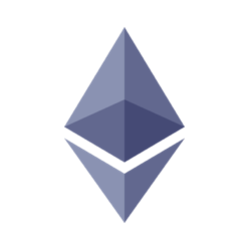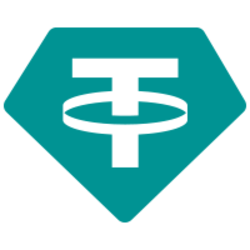Ethereum Classic is a significant part of blockchain history. It emerged from a split in the Ethereum network. This split occurred due to disagreements over a hard fork. The concept of Ethereum Classic was first proposed in 2016. It was a response to the DAO hack that shook the Ethereum community. Understanding this timeline is crucial for grasping its importance.
What is Ethereum Classic? Understanding the Basics
Ethereum Classic is a decentralized platform. It allows developers to build smart contracts and decentralized applications (dApps). The platform operates on a blockchain, similar to Ethereum. However, it maintains the original Ethereum protocol. This means it does not implement changes made after the DAO hack.
Key Features of Ethereum Classic:
- Decentralization: No central authority controls the network.
- Smart Contracts: Programmable contracts that execute automatically.
- Immutable Ledger: Once data is recorded, it cannot be altered.
- Community-Driven: Decisions are made by the community, not a central entity.
Ethereum Classic aims to uphold the original vision of Ethereum. It emphasizes immutability and censorship resistance. This makes it unique in the blockchain space.
Key Differences Between Ethereum and Ethereum Classic
Ethereum and Ethereum Classic share a common origin. However, they have diverged significantly since the split. Here are some key differences:
- Development Philosophy: Ethereum focuses on innovation and upgrades. Ethereum Classic prioritizes immutability and the original code.
- Community Support: Ethereum has a larger developer community. Ethereum Classic has a dedicated but smaller community.
- Market Value: Ethereum generally has a higher market capitalization. Ethereum Classic’s value is lower but stable.
These differences shape the identity of each platform. Understanding them helps users choose which platform to engage with.
The Birth of Ethereum Classic: A Historical Overview
The birth of Ethereum Classic is rooted in controversy. In 2016, a project called the DAO raised over $150 million. Unfortunately, a vulnerability was exploited, leading to a significant loss of funds. The Ethereum community faced a dilemma. They could either reverse the hack or maintain the original blockchain.
The decision to implement a hard fork led to the creation of Ethereum Classic. This fork preserved the original blockchain. The concept of Ethereum Classic was first proposed shortly after the hard fork. It aimed to honor the original principles of blockchain technology.
Who Proposed Ethereum Classic and When?
The proposal for Ethereum Classic came from various community members. Notably, the idea gained traction after the hard fork in July 2016. Key figures in the community advocated for the preservation of the original chain. They believed in the importance of immutability.
The Ethereum Classic community formed shortly after the split. They aimed to continue developing the original Ethereum protocol. This movement emphasized the need for a decentralized platform. The concept of Ethereum Classic was thus solidified in the community’s vision.
The Future of Ethereum Classic: Opportunities and Challenges
The future of Ethereum Classic presents both opportunities and challenges. On one hand, it has a loyal community. This community is committed to its development. On the other hand, it faces competition from Ethereum and other platforms.
Opportunities for Ethereum Classic:
- Niche Market: It can attract users who value immutability.
- Decentralized Applications: Developers can create unique dApps on its platform.
- Community Growth: Increased awareness can lead to more users and developers.
Challenges Facing Ethereum Classic:
- Market Competition: Competing with Ethereum and other blockchains is tough.
- Limited Resources: A smaller community means fewer development resources.
- Regulatory Issues: Navigating regulations can be challenging for all cryptocurrencies.
In conclusion, the concept of Ethereum Classic was first proposed in 2016. It represents a commitment to the original principles of blockchain technology. Understanding its history and differences from Ethereum is essential. The future holds both promise and challenges for Ethereum Classic. As the blockchain landscape evolves, so will its role within it.
The Importance of Community in Ethereum Classic
The community plays a vital role in the success of Ethereum Classic. Unlike centralized platforms, Ethereum Classic relies on its users for development and governance. This decentralized approach fosters innovation and resilience. Community members actively participate in discussions and decision-making processes.
Key Aspects of the Ethereum Classic Community:
- Open Source Development: Anyone can contribute to the codebase.
- Active Forums: Community members engage in discussions on platforms like Reddit and Discord.
- Events and Meetups: Regular events help strengthen community ties and share knowledge.
The community’s dedication is crucial for Ethereum Classic’s growth. Their collective efforts ensure the platform remains relevant in a competitive landscape.
Technological Innovations in Ethereum Classic
Ethereum Classic continues to evolve technologically. While it maintains its original code, it also embraces necessary upgrades. These innovations aim to improve security, scalability, and usability. The community actively discusses and implements these changes.
Recent Technological Developments:
- ECIP (Ethereum Classic Improvement Proposals): A process for proposing changes and improvements.
- Smart Contract Enhancements: Ongoing updates to improve contract functionality.
- Interoperability Initiatives: Efforts to connect with other blockchains for enhanced usability.
These technological advancements help Ethereum Classic stay competitive. They also attract developers interested in building on a stable platform.
The Role of Ethereum Classic in the Broader Blockchain Ecosystem
Ethereum Classic holds a unique position in the blockchain ecosystem. It serves as a reminder of the importance of immutability. This principle is fundamental to the philosophy of blockchain technology. By maintaining its original code, Ethereum Classic emphasizes the need for trust and transparency.
Contributions to the Blockchain Space:
- Decentralization Advocacy: Promotes the idea that no single entity should control a network.
- Historical Significance: Represents a pivotal moment in blockchain history.
- Diverse Use Cases: Supports various applications, from finance to gaming.
Ethereum Classic’s role in the broader ecosystem is significant. It challenges other platforms to consider the implications of their decisions.
The Legacy of Ethereum Classic
In summary, the concept of Ethereum Classic was first proposed in 2016. It emerged from a critical moment in blockchain history. The platform emphasizes the importance of immutability and decentralization. Its community plays a crucial role in its ongoing development.
As Ethereum Classic moves forward, it faces both opportunities and challenges. The commitment of its community will be essential for its success. By continuing to innovate and uphold its core principles, Ethereum Classic can carve out a lasting legacy in the blockchain world.
In conclusion, understanding the history and significance of Ethereum Classic is vital. It not only represents a unique approach to blockchain technology but also serves as a testament to the power of community-driven development. As the landscape evolves, Ethereum Classic will continue to be a key player in the ongoing narrative of decentralized technology.





